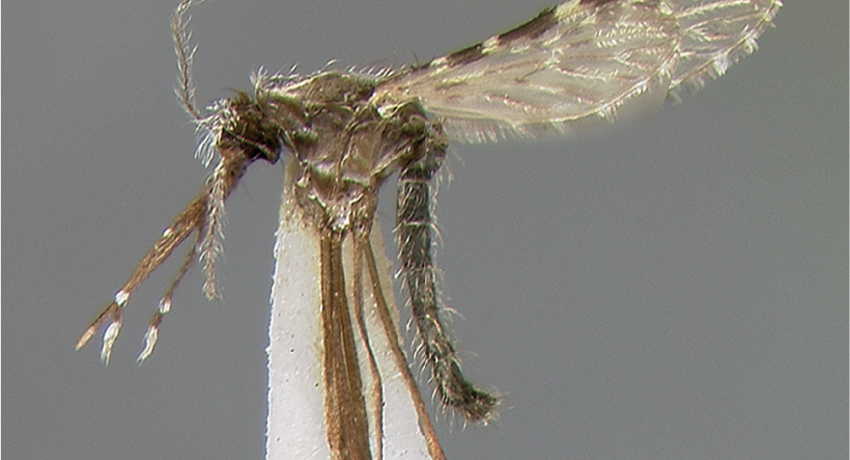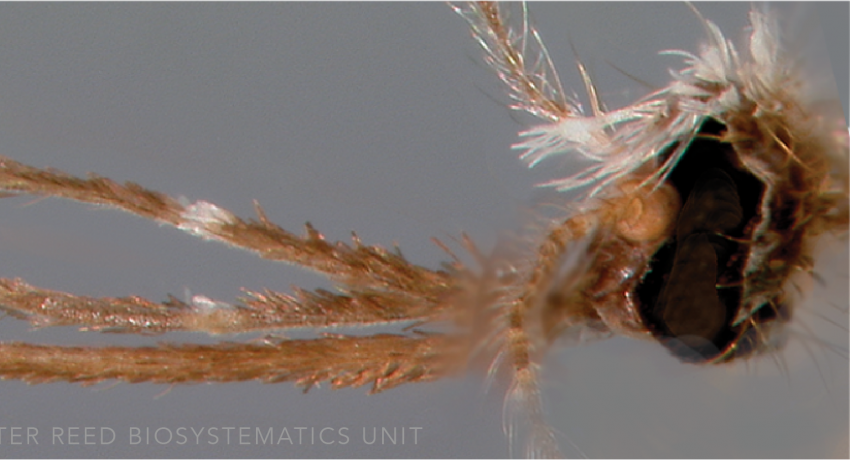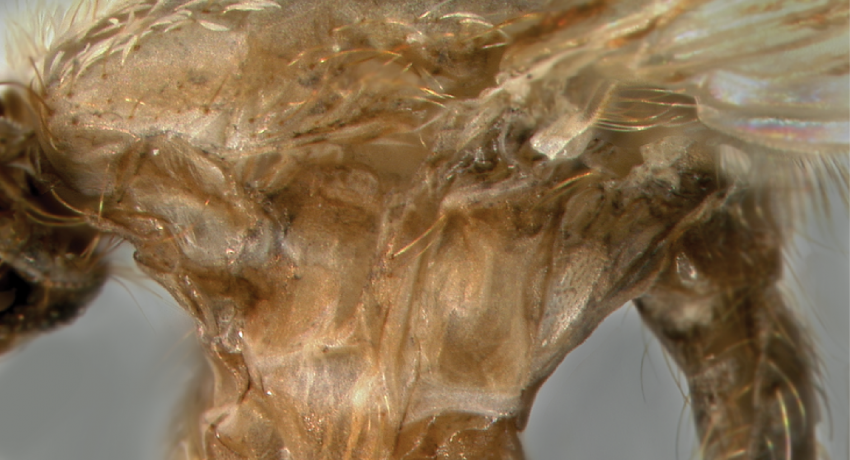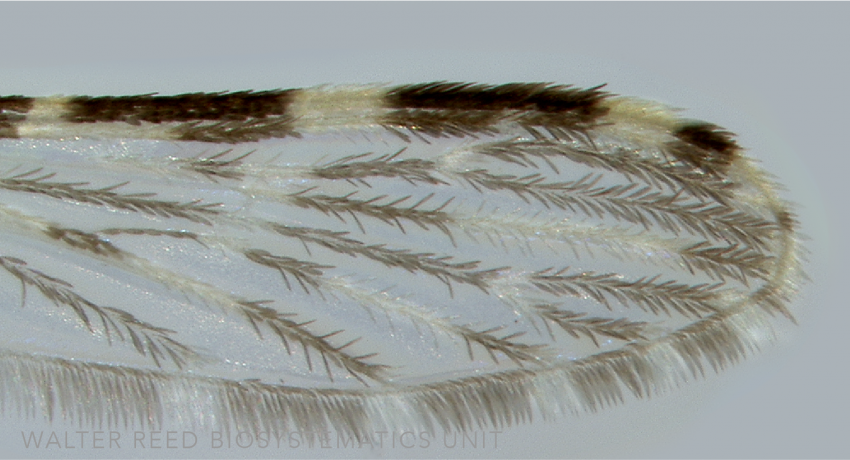INDO-ORIENTAL & PALEARCTIC REGIONS
Etymology: Jeypur State, India
Anopheles jeyporiensis has a unique covering of short, oblong white scales on the scutum, extending all the way back to the scutellum. Anopheles jeyporiensis is the only unplaced member of the Funestus Group, and has four synonyms—vincenti Laveran (Vietnam), jeyporensis Theobald (India), candidiensis Koidzumi (Taiwan), and tonkinensis Toumanoff (Vietnam). The species is highly variable, especially in morphological characters of the wing and palps and four chromosomal forms (A, B, C, D) have been reported from Thailand.
Type locality: Nagpur, Jeypur State, [Central Provinces], India
Type depository: Location Unknown (LU)
DIAGNOSTIC CHARACTERS (Click photos to view; mouse over and click large photo to zoom in.)
ADULT (illustrated): Palpus with 3 pale bands; frontal tuft with distinctive long white scales. Thorax: Center of scutum covered with short white scales and golden setae; antepronotal scales absent. Legs: Ta-I1 with short apical pale band nearly 2 x width of tarsomere. Legs: Ta-III pale bands narrow; Ta-III5 not all white. Wing: Vein R with accessory spot on preapical dark (PD) area. Abdomen: Terminal abdominal segments without scales.
LARVA (not illustrated): Head: Setae 2,3-C with numerous short aciculae; seta 4-C 2–5 branched.
TAXONOMIC KEYS
Nguyen Thuong Hien 1968
Darsie & Pradhan 1990
![]()
WRBU – Anopheles - Myzomyia Series - Oriental Region - Larva
![]()
WRBU - Genera - Global - Adult
![]()
WRBU - Genera - Global - Larva
![]()
WRBU - Genera - Eastern Palearctic - Adult
![]()
WRBU - Genera - Eastern Palearctic - Larva
![]()
WRBU - Genera - Oriental - Adult
![]()
WRBU - Genera - Oriental - Larva
![]()
WRBU - Anopheles Subgenera and Series - Oriental - Adult
![]()
WRBU - Anopheles Subgenera and Series - Oriental - Larva
Exemplar DNA sequences
An. jeyporiensis COI: DQ154157; DQ154159; DQ317591–93; GQ259195; HQ877379.
BIONOMICS
Immatures
Typical immature habitats of An. jeyporiensis include the cool, clear, stagnant or slow-moving freshwaters of seepage pools, ponds and swamps with abundant emerging vegetation. Immatures have also been collected in water tanks and from terraced rice fields, but only when water replacement was occurring. In Thailand, all four chromosomal forms (A, B, C, D) were collected from marshy depressions with plentiful submerged and emergent vegetation.
Adults
Anopheles jeyporiensis is associated with hilly, mountainous, or high plateau regions, at elevations up to 1829 m. It is commonest post-monsoon and in the cooler periods (November to March) of the year in India. Anopheles jeyporiensis is regarded as a primary malaria vector, with Plasmodium infection rates of 2.5–4.5%. In Laos, indoor biting times peak at 22:00, and the biting rates were sustained into the early hours of the morning. Exophilic bites peaked at midnight. In Laos and Vietnam, An. jeyporiensis primarily enters houses to feed, although it is captured biting cattle outdoors.
DISTRIBUTION NOTES
Afghanistan, Bangladesh, Cambodia, India, Laos, Macau, Myanmar, Nepal, Pakistan, People's Republic of China (includes Hainan Island & Hong Kong), Sri Lanka, Taiwan, Thailand, Vietnam.
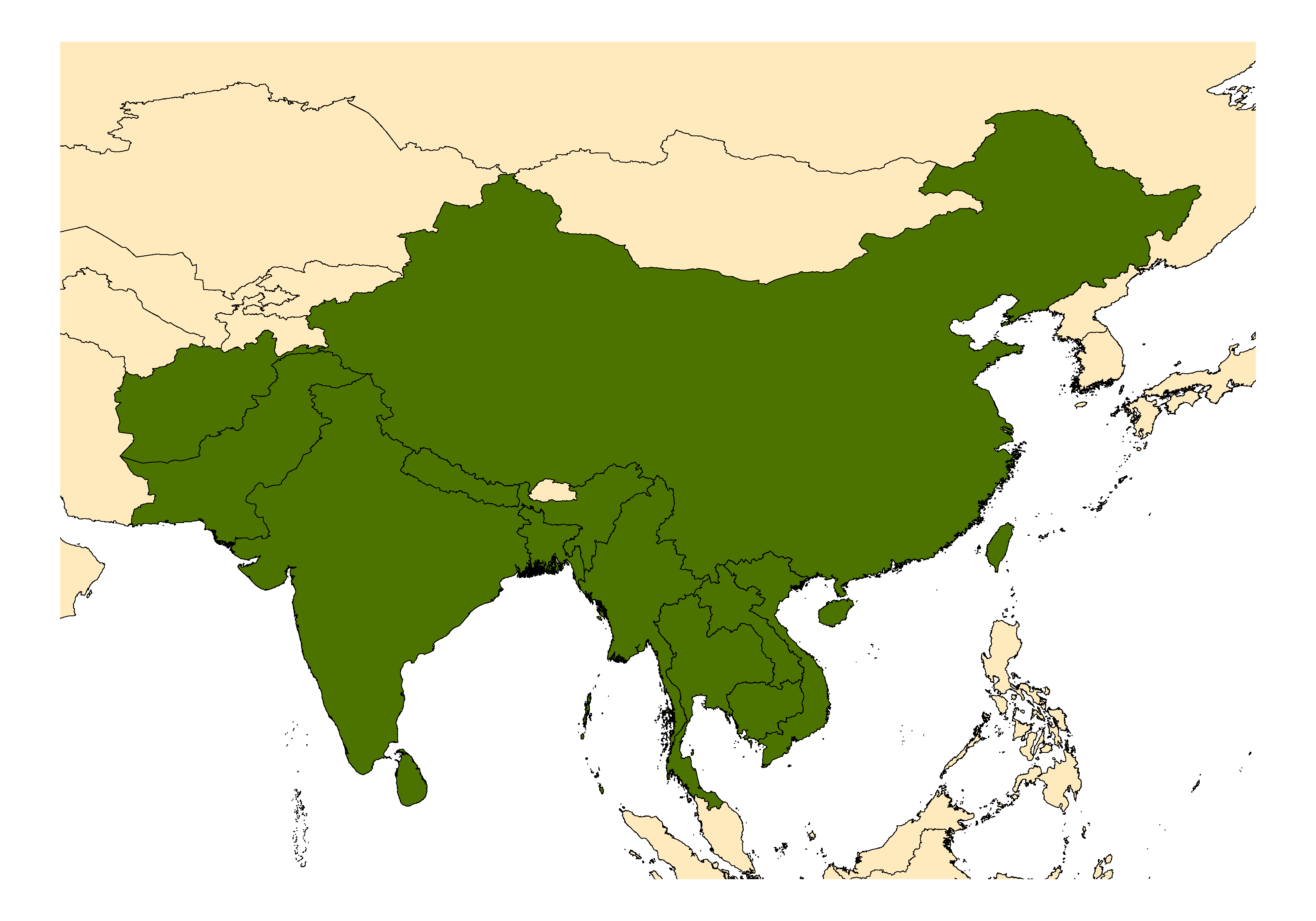
WRBU VECTOR HAZARD REPORTS
None; View other WRBU Vector Hazard Reports
Available GIS Models
None
IMPORTANT REFERENCES (full citations below)
James 1902: 32 (A*, L*)
Christophers 1933: 220 (M*, F*, P, L*, E)
Aslamkhan 1971b (distribution; Pakistan)
Bonne-Wepster & Swellengrebel 1953: 392 (M*, F*, L; as candidiensis)
Nguyen Thuong Hien 1968 (F*, L*; keys, taxonomy, bionomics, Vietnam)
Harrison & Klein 1975: 10 (distribution)
Harrison 1980: 69 (M*, F*, P*, L*; type information)
Darsie & Pradhan 1990 (F, L; taxonomy, keys, bionomics, distribution; Nepal)
Harrison et al. 1991 (1990): 223 (Thailand)
Baimai et al. 1996 (chromosomes; as A, B, C, D)
Vythilingam et al. 2003 (bionomics, medical importance, distribution; Laos)
Oo et al. 2004 (distribution; Myanmar)
Rattanarithikul et al. 2006b (F*, L*; bionomics, distribution, keys)
Qu & Zhu 2008 (distribution; People's Republic of China)
Rueda et al. 2008: 397 (distribution)
Manguin 2013 (taxonomy, bionomics, medical importance, control)
Gunathilaka et al. 2015 (distribution; Sri Lanka)
CURRENT SYNONYMS
syn. vincenti Laveran
1901c: 993 (F). Type locality: Van-Linh, Tonkin, Indochina [Hanoi province, Vietnam] (PIP). References: Reid 1947: 88 (syn.); Harbach 2018c (senior synonym pending application to the International Commission on Zoological Nomenclature; also see Harbach, Garros et al. 2007).
syn. jeyporensis Theobald
1903a: 66 (M*, F). Type locality: Jeypore Agency, India (NHMUK). References: Christophers 1933: 220 (taxonomy); Harrison 1980: 65 (junior secondary homonym; lectotype designation).
syn. candidiensis Koidzumi
1924: 98 (A). Type locality: Lake Candidius, Formosa [Taiwan, ROC] (LU). References: Christophers 1933: 225 (to var.); Russell et al. 1943: 116 (subspecies); Chow 1970: 47 (justifies varietal); Harrison 1980: 83 (synonymy).
syn. tonkinensis Toumanoff
1931: 576 (M, L; aconitus variety). Type locality: Tonkin, Indochina [Hanoi Province, Vietnam] (LU).
CURRENT SUBSPECIES
None
CITED REFERENCES
Aslamkhan, M. (1971b). The mosquitoes of Pakistan I. A checklist. Mosquito Systematics, 3(4), 147–159.
Baimai, V., Kijchalao, U., & Rattanarithikul, R. (1996). Metaphase karyotypes of Anopheles of Thailand and southeast Asia: V. The Myzomyia series, subgenus Cellia (Diptera: Culicidae). Journal of the American Mosquito Control Association, 12(1), 97–105
Bonne-Wepster, J., & Swellengrebel, N.H. (1953). The anopheline mosquitoes of the Indo-Australian Region. Amsterdam: J. H. de Bussy.
Christophers, S.R. (1933). The fauna of British India, including Ceylon and Burma. Diptera.Vol. IV. Family Culicidae. Tribe Anophelini. London: Taylor and Francis.
Darsie, R.F., Jr., & Pradhan, S.P. (1990). The mosquitoes of Nepal: Their identification, distribution and biology. Mosquito Systematics, 22(2), 69–130.
Gunathilaka, N., Hapugoda, M., Abeyewickreme, W., & Wickremasinghe, R. (2015). Appearance of Anopheles jeyporiensis James from Sri Lanka; a new species to the mosquito checklist. Medical Entomology and Zoology, 66(3), 1–5.
Harrison, B.A. (1980). Medical entomology studies - XIII. The Myzomyia Series of Anopheles (Cellia) in Thailand, with emphasis on intra-interspecific variations (Diptera: Culicidae). Contributions of the American Entomological Institute, 17(4), 1–195.
Harrison, B.A., & Klein, J.M. (1975). A revised list of the Anopheles of Cambodia. Mosquito Systematics, 7(1), 11–12.
Harrison, B.A., Rattanarithikul, R., Peyton, E.L., & Mongkolpanya, K. (1991). Taxonomic changes, revised occurrence records and notes on the Culicidae of Thailand and neighboring countries. Mosquito Systematics, 22 (1990)(3), 196–227.
James, S.P. (1902) Malaria in India. Science of Medicine, Sanitary Department of India (New series), 2, 1–106.
Koidzumi, M. (1924). The anophelines of Formosa, pp. 96–101. In: Hoops, A.S. & Scharff, J.W. (eds), Far Eastern Association of Tropical Medicine-Transactions of the Fifth Biennial Congress held at Singapore, 1924. John Bale, Sons & Danielson, London
Manguin, S. (Ed.) (2013). Anopheles mosquitoes - New insights into malaria vectors. Janeza Trdine 9, 51000 Rijeka, Croatia: InTech.
Nguyen Thuong Hien 1968. The genus of Anopheles in Vietnam. Saigon: Bureau of Entomology, National Malaria Program/ Republic of Vietnam. English translation by Military Entomology Information Service. 205pp.
Oo, T.T., Storch, V., & Becker, N. (2004). Review of the Anopheles mosquitoes of Myanmar. Journal of Vector Ecology, 29(1), 21–40.
Qu, F., & Zhu, H. (2008). On a checklist of the Anopheline mosquitoes in China with rectification for some specific names. Chinese Journal of Parasitology and Parasitic Diseases, 26(3), 210–216.
Rattanarithikul, R., Harrison, B.A., Harbach, R.E., Panthusiri, P., & Coleman, R.E. (2006b). Illustrated keys to the mosquitoes of Thailand. IV. Anopheles. Southeast Asian Journal of Tropical Medicine and Public Health, 128(Supplement 2), 2.
Rueda, L.M., J.E. Pecor, R. G. L., & Carder, M. (2008). New record and updated checklist of the mosquitoes of Afghanistan and Iraq. Journal of Vector Ecology, 3(2), 397–402.
Theobald, F.V. (1903a). A monograph of the Culicidae of the World (Vol. 3). London: British Museum (Natural History). 359pp
Toumanoff, C. (1931). Sur une variété nouvelle d'Anopheles aconitus Donitz observee au Tonkin. Comptes Rendus des Seances de la Société de Biologie et de Ses Filiales, 107, 575–576.
Vythilingam, I., Phetsouvanh, R., Keokenchanh, K., Yengmala, V., Vanisaveth, V., Phompida, S. & Hakim, S.L. (2003). The prevalence of Anopheles (Diptera: Culicidae) mosquitoes in Sekong Province, Lao PDR in relation to malaria transmission. Tropical Medicine and International Health, 8(6), 535–535.
CITE THIS PAGE
Walter Reed Biosystematics Unit (Year). Anopheles jeyporiensis species page. Walter Reed Biosystematics Unit Website, http://wrbu.si.edu/vectorspecies/mosquitoes/jeyporiensis, accessed on [date (e.g. 03 February 2020) when you last viewed the site].

